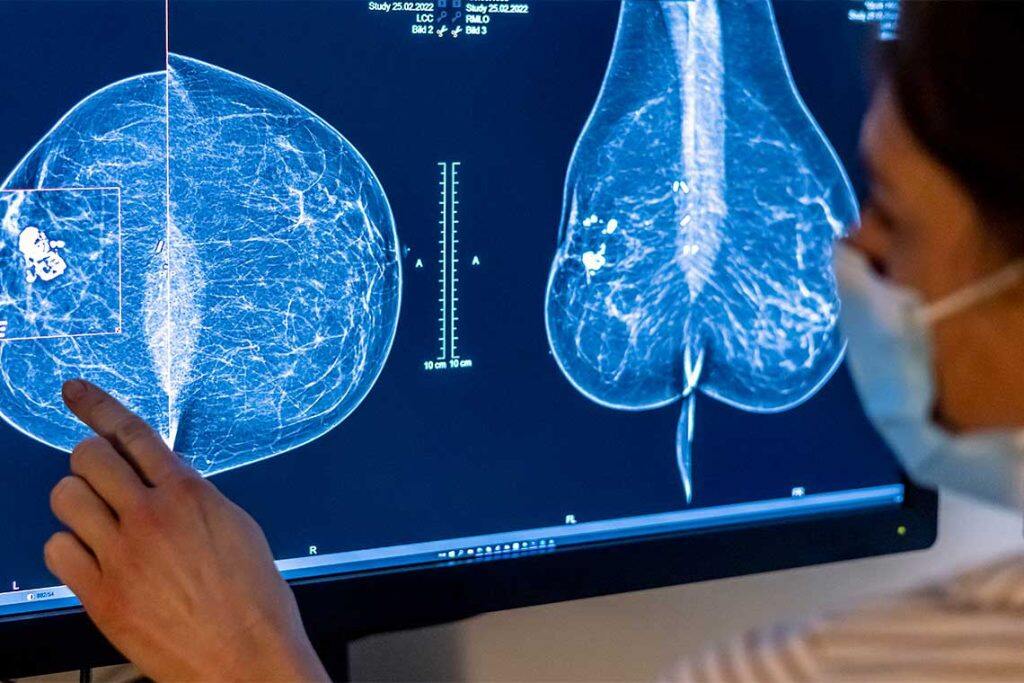

An international team of researchers have discovered a new genetic mutation that could help predict the likelihood of hereditary breast cancer.
The discovery, published in the American Journal of Human Genetics, sprang not from the latest technology, but from decades-long research relationships that spanned continents.


Reza Akbari, a cancer researcher at Women’s College Hospital and professor of genetic epidemiology at the University of Toronto’s Dalla Lana School of Public Health, says he and his colleagues in Poland identified the mutation in a gene called ATRIP by working with a highly homogenous population of Polish breast cancer patients.
That, in turn, helped them to spot what might have been impossible to see otherwise.
“People say discovering a cancer-causing mutation is like finding a needle in a haystack,” says Akbari. “But I think it’s more like finding a specific piece of hay. The low-hanging fruit has already been picked, but we still don’t know what causes breast cancer in at least one-third of families with generations of cases.”
In 1994, an international group of scientists, including Akbari’s colleague Steven Narod, a senior scientist at Women’s College Hospital and a professor at Dalla Lana School of Public Health and in the Temerty Faculty of Medicine, discovered the BRCA1 and BRCA2 gene mutations that cause breast cancer in the vast majority of women who carry them. It was a momentous finding. But BRCA1/2, together with a small cluster of subsequently uncovered gene mutations only account for two-thirds of breast cancers that run in families.
For the other third, there has been no test to help members make decisions about how to protect themselves with procedures like preventative mastectomies.
It has been years since a new gene has been identified in the breast cancer world. The remaining mutations might lurk in the lesser-known quarters of our genomes or would be more rare than BRCA mutations or less obviously tied to breast cancer. But Akbari and his colleagues in Poland had something very valuable: access to a “founder” population of patients – a large group of people whose genetic mutations are magnified because they are descended from a small group. Founder populations exist in many parts of the world such as Quebec, Iceland and Poland.
Starting in 1998, the familial breast cancer research team, led by Narod, had established ties with Polish scientists, allowing the Women’s College Hospital group access to a founder population of breast cancer patients. After joining Women’s College Hospital a decade ago, Akbari cultivated these ties, working collaboratively with Cezary Cybulski at Pomeranian Medical University to establish a large breast cancer recruitment program – and making sure to visit frequently.
The two research groups clicked.
“They’ve been great collaborators,” says Akbari, of the Polish group, along with fellow researchers Jean-Yves Masson and Amir Abbas Samani, from Laval University and U of T respectively. “There was no ego involved, just a willingness to work together. I’ve never seen such a thing anywhere else. We made a great team.”
Akbari and his colleagues sequenced the genomes of about 500 Polish breast cancer patients, plus a control group, and validated the preliminary findings with more than 25,000 breast cancer patients and controls from Poland. He found his smoking gun: a genetic mutation associated with more than a 100 per cent increased risk of breast cancer in the women studied. But the risk estimation was based on a single founder mutation in a gene known as ATRIP. Next, they searched for the mutations in the UK Biobank, which contains half a million genomes from a more diverse group of people. In that population, the relationship between the mutation and the likelihood of developing breast cancer was even stronger – more than 200 per cent.
The mutation is rare – affecting only 0.25 percent of breast cancer patients in the study. But the team made a parallel discovery that could help tailor treatments to the next generation of breast cancer patients. They found that the breast tumours of the patients with a germline ATRIP mutation had a hallmark trait indicating they would respond to an existing class of targeted therapies called PARP Inhibitors. And this could apply to an even wider group.
If a breast cancer patient doesn’t have the ATRIP mutation in their germline DNA, the mutation might still appear in their tumors, meaning they could potentially respond to PARP inhibitors.
“These are preliminary data and more research needs to be done before being able to use it in clinic,” Akbari cautions. “But it shows that the finding can have implications for a greater number of people.”
Akbari is hopeful about the public health ramifications since breast cancer is the leading cause of cancer death in women around the world.
“When we understand why breast cancer occurs in families, we can easily screen all the members and determine who is at high risk and who’s not,” says Akbari. “If the risk is big enough, women can choose preventive surgeries or more aggressive screenings to detect it earlier. And every gene we identify will improve our general knowledge of breast cancer biology – which will pave the road for developing more effective targeted treatment of breast cancer in all patients.”







































